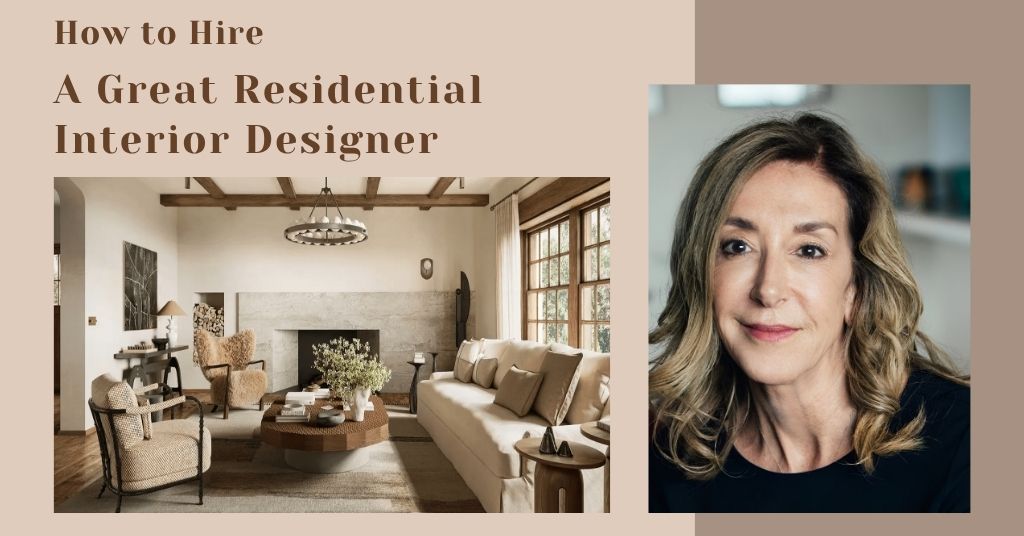
Hiring a residential interior designer is a deeply personal decision — one that influences not just the look of your home but how you experience it every day. Your designer will shape the atmosphere of the space where you rest, gather, work, and live. This goes far beyond color palettes and throw pillows — it’s about interpreting your lifestyle, tastes, and aspirations into a cohesive, functional environment.
Whether you’re planning a full-scale renovation or refreshing a few key spaces, choosing the right designer is an essential first step. Here’s a detailed guide on how to hire a great residential interior designer — one who will transform your house into a home that feels uniquely yours.
Designing a beautiful home isn’t just about having good taste. A skilled interior designer brings a layered understanding of space planning, architecture, functionality, and aesthetics. They bridge the gap between imagination and execution — ensuring that your home looks stunning and works seamlessly for how you live.
More importantly, they help you avoid costly mistakes, source the right furnishings, and manage the overall project flow. Whether you're building from the ground up or simply remodeling a few rooms, working with a designer saves you time, stress, and even money in the long run.
In luxury residential settings, this expertise is even more crucial. Designers accustomed to working with high-end materials, custom details, and unique architectural features are better equipped to bring elevated results.

Before reaching out to potential designers, it’s important to have a strong sense of your own style, needs, and lifestyle preferences.
Ask yourself:
You don’t need to know all the answers right away — a good designer will help you refine your vision. However, being clear about your expectations from the outset will make it easier to find someone who aligns with your goals.
Once your vision is defined, begin researching designers in your area — or those who specialize in projects similar to yours. In high-end communities like Paradise Valley, Scottsdale, Los Angeles, or San Francisco, look for professionals who have experience in luxury residential interiors and are familiar with the local architecture and lifestyle.
Great places to look:
Don’t rush the process — this is a relationship that requires trust, communication, and collaboration.

Once you’ve shortlisted a few candidates, schedule consultations. During these conversations, look for both professional competence and personal chemistry.
Here’s what to pay attention to:
Beyond technical skills, trust your instincts. You should feel heard, respected, and inspired after your conversation.
Recommended for you: What Do Interior Designers Do?
Transparency is essential when it comes to cost. Some designers charge hourly, others offer flat fees, and some work on a percentage of the overall budget. Ask for clarity on:

Equally important is how they manage your overall project budget. Do they provide detailed estimates? Are they proactive about keeping costs in check without compromising quality?
A trustworthy designer helps you make the most of your investment and guides you toward smart decisions — especially in luxury settings where choices can quickly escalate in price.
Read related: Why Hire an Interior Designer?
Interior design is a dynamic process that unfolds over months or even years. That’s why structure and communication are so important.
Ask how the designer structures the project phases:
Also ask how often they update clients and through what methods — email, in-person meetings, project management software, etc. The best designers maintain consistent communication and are proactive in addressing questions or obstacles.
A truly great residential interior designer isn’t just a decorator — they’re a creative problem solver, a skilled project manager, and a thoughtful collaborator.
They:
In luxury homes, every detail matters — and your designer should be someone who obsesses over those details as much as you do.

Design doesn’t end with installation. Ask whether the designer offers post-project support, such as:
A designer’s commitment to your satisfaction should continue even after the last piece of furniture is placed.
At the heart of it, hiring a great residential interior designer is about building a relationship based on trust, collaboration, and shared vision.
They’re not just creating a “look” — they’re crafting a lifestyle experience tailored to how you live, entertain, work, and unwind. When that relationship works well, the result is more than just a beautiful home — it’s a space that reflects your story in every square foot.
If you’re looking for an experienced, detail-oriented, and thoughtful design team in Paradise Valley, Scottsdale, San Francisco, or Los Angeles, Tower Design is here to help bring your dream home to life.
As early as possible. Ideally, bring a designer on board during the architectural planning stage to ensure every detail — from ceiling heights to lighting — aligns with the design vision.
Yes. Great designers collaborate closely with contractors, architects, and tradespeople to coordinate construction elements with design finishes.
Absolutely. While many specialize in full-home luxury interior design services, many also take on smaller, focused projects if they align with their service scope and your expectations.
A skilled designer will help you discover your preferences through visual tools, lifestyle questions, and concept presentations. You don’t need to have all the answers upfront.
A decorator focuses mainly on furnishings and aesthetics. An interior designer often has formal training and can address architectural elements, space planning, and technical drawings.